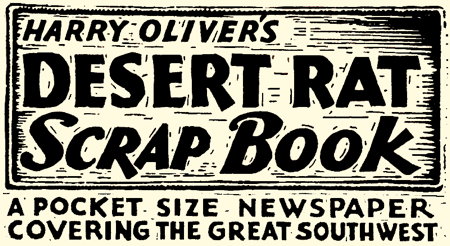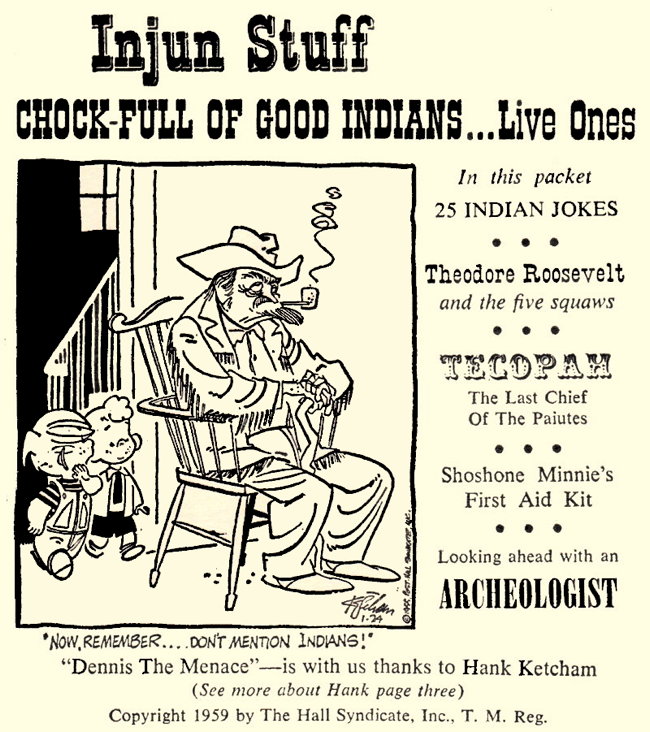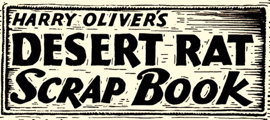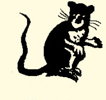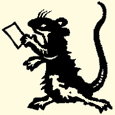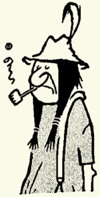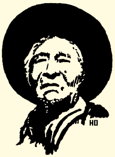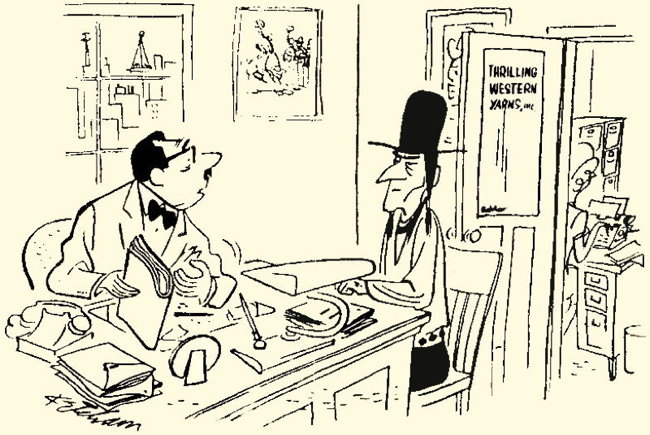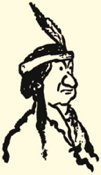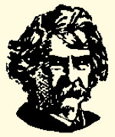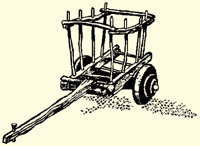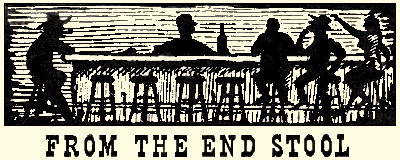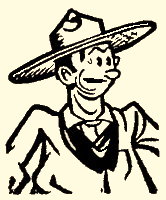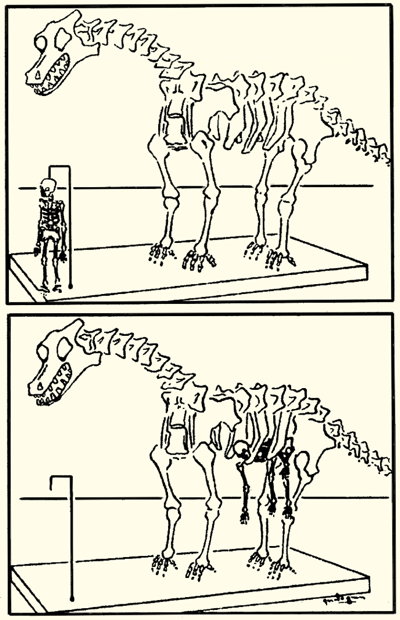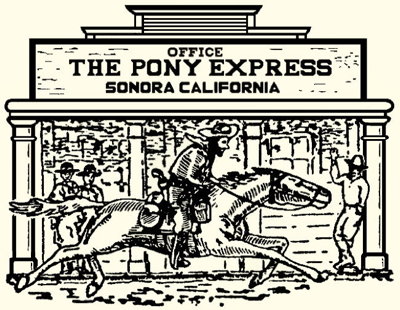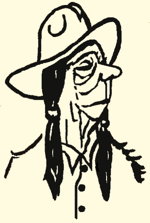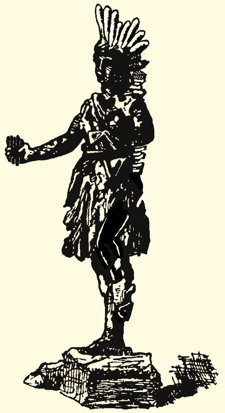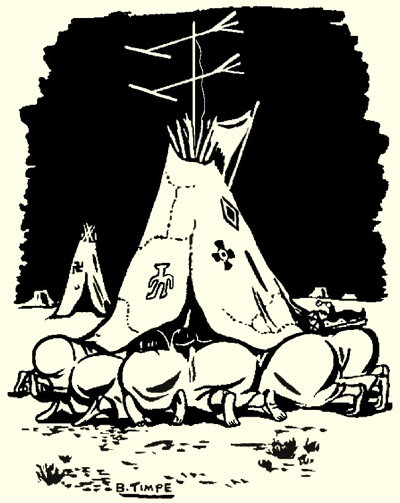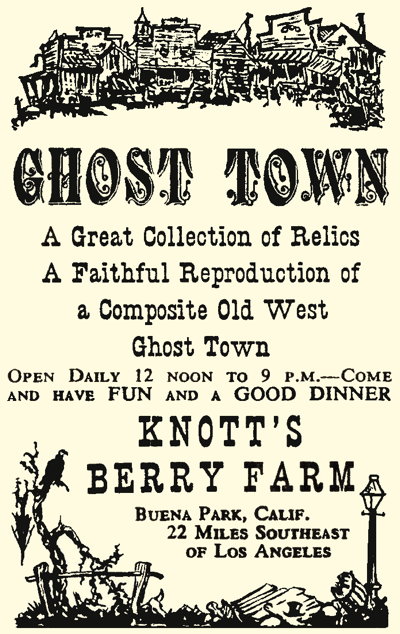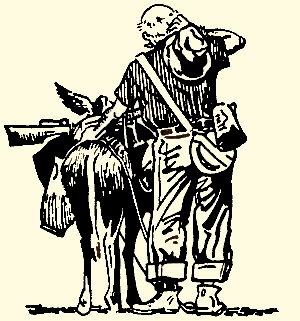BACK HOME COVER THIS IS HISTORICAL INFORMATION ONLY
PRICE 10 CENTS . . . . . . . ONLY ONE LOUSY THIN DIME
PACKET FOUR OF POUCH NINE
TEEPEE (ETIQUETTE) PACKET
PUBLISHED FOUR TIMES A YEAR
ONLY NEWSPAPER IN AMERICA YOU CAN OPEN IN THE WIND
There is no unbelief! . . . . . . . . Chief Sequoya.2
Smallest newspaper in the world and the only 5 page one. (Not a Texas Boast)
Packet 4 of Pouch 9
![]()
This paper is not entered as 2nd class mail. It's a first class newspaper.
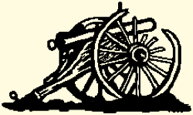
"If you like this windproof paper tell the world: if you don't like it, keep your fool mouth shut."
![]()
I welcome criticism from my readers
Write yours here
□
Then Mail It in
|
THE MAIL |
Dixon Gayer—teacher of journalism Long Beach College — writes me the reason I hate to write a letter is because the circulation is only one.
Our two hundred years of Vicious Propaganda
SHAME AMERICA
Many times you have heard
The Only Good Indian Is A Dead Indian
THEODORE ROOSEVELT was resentful of its common use and reflected on its power,
long before Hitler started his wholesale propaganda factory.
This Country is full of Good Indians---LIVE ONES.
Why at 71 & ¾'s I feel a BIT LIVELY my self.
One reason I am so sure of this is that I am one-fourth Indian. Yes, I am now one-quarter Cherokee Indian, I used to be one-eighth Cherokee, one-eighth Scotch, one-eighth Irish, one-eighth Dutch, and one-half English—Here is how I made the change—I gave all my English blood to the blood bank. I told that blonde nurse to cut if off as soon as any Irish or Indian blood showed up, and she did, I am sure. Losing the English blood has helped my sense of humor, by gosh I know, and what's more I didn't multiply that Indian blood enough to lose any of my beard. "A job well done, I'd say!"
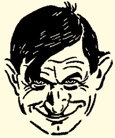 The influence of the American Indian is firmly but unconsciously stamped on most everything we do. You all speak hundreds of Indian words daily. Did you ever realize at least twenty of the states comprised in the Unites States bear Indian names, while for rivers, lakes and towns, the list of Indian names is in almost equal proportion. By the time you have thoroughly digested this packet you will realize that the Indian's fine, simple philosophy and his humor, which is rightfully called American humor, is a great part of you too!
The influence of the American Indian is firmly but unconsciously stamped on most everything we do. You all speak hundreds of Indian words daily. Did you ever realize at least twenty of the states comprised in the Unites States bear Indian names, while for rivers, lakes and towns, the list of Indian names is in almost equal proportion. By the time you have thoroughly digested this packet you will realize that the Indian's fine, simple philosophy and his humor, which is rightfully called American humor, is a great part of you too!
A sort of unhurried, thoughtful humor that lasts.
We all remember the simple soft spoken, tru american humore of the late Will Rogers, and his humor was truly American. Not a fast shouting, bunch of noisy clatter, but the subtle, dry wit of the Early Americans.
![]()
Each time I get this paper off the press and know for sure the country is saved for another three months—I just sit back to think and am thankful for the many things I don't have, that I didn't want—simple ain't it—or is it?
MY WEATHER
Indians used to broadcast weather messages by holding a wet blanket over the fire. Now we've got television and get to see the wet blanket in person.
The Indian weatherman did not send up Smoke-Signals in the rain—but the other Indians knew it wa raining—one old Chief sitting in his teepee would just call in his Dogs—if they were wet—he knew it was raining.
The above is from my "Almanac" that started in the October 1959, "Desert Magazine"—I am proud to join this 'medalist' Magazine of the great Outdoor Southwest.
I am to come down from the 'painted-hills' some-what-like Rip Van Winkle.
![]()
An Indian Chief, on his return from Washington, told his family that Abe Lincoln was a Navaho, having viewed a bronze bust of Lincoln, he says he knows he was a Navaho because, "him same color as Navaho!"
![]()
An Indian Formula for OLD AGE
Drink a little, love a lot, and take it easy with the knife and fork.
Chief Racehorse (Age 83) Palm Springs
![]()
Eight-year-old Johnny returned to New York after a trip through the West and was telling his little friends all about it.
"There we were," he related, "Indians in front of us, Indians behind us, Indians on all sides."
Johnny's playmates became all excited and screamed in unison, "What did you do, what did you do?"
"What could we do?" replied Johnny. "We bought a blanket."
Jan Murray
![]()
GRANT'S CALIFORNIA BATTLES
President Grant, then an Army officer, led in wars against California Indians in Humbolt County in the 1850s.
![]()
When an Indian reappeared in a Nevada drug store for the fourth time and asked for a half-dozen bottles of a certain cough medicine, the druggist grew curious. "Somebody in the family sick?" he asked. "Nope, no sick," grunted the Indian. "Then what in he world are you doing with all this cough syrup?" persisted the druggist. "Ugh!" responded the Indian. "Me likeum on pancakes."
THE ONLY FINE THING I KNOW THAT WE HAVE DONE FOR THE INDIANS IS TO CALL
A FEW FINE DAYS IN EARLY FALL INDIAN SUMMER
MOJAVE or MOHAVE
This Word "MOJAVE" J or H?
Much confusion and argument have arisen from the two spellings of the word "Mojave." A ruling of the Geographical Board in Washington, D. C., however, a few years ago simplified the problem somewhat. If you are in california, the name of the river, the city and the desert should be spelled with a "j"; Mojave. If, on the other hand, you happen to be in Arizona, then you must spell the name of the county and the Indian tribe with an "h": Mohave. Dr. A. L. Kroeber of the University of California, noted anthropologist, claims that only the "h" spelling should exist since the word is an Indian one, not Spanish, and was only transliterated by the early Spanish, who gave all "h" sounds a spelling of "j." The very same problem arose with the great Indian tribe of Northern Arizona; should it be Navaho or Navajo?
The word Mojave (or Mohave) itself is of Indian origin and is that tribe's name for "three mountains," referring to three distinctive landmarks near the present city of Needles, whose name also refers to this geological oddity.
Johnny Shoshone was without doubt the most colorful Indian we knew in Death Valley—but also—colorful was the teller of this yarn—"Emperor" T. R. Goodwin first superintendent of the Monument — a genius-road-builder, (he also built "The Sand-Free" road at Yuma, over the "Algodones" sand dunes). Yes you can be sure his road-building in Death Valley will be appreciated in years to come—thank God he got there first.
For years Johnny Shoshone enjoyed the exclusive right as a photographers model. It started one day in Wildrose Canyon when a Washington official, escorted by your Superintendent, met the old Indian on a riding burro, a 30 carbine across the saddle, and a pack burro following behind.
The Washington man, a movie camera addict, asked Johnny how much to take his picture. "Ya Ya, Oui Oui, Si Si, Sure, two-bits," was the unexpected reply.
Winters at Furnace Creek yielded a rich crop of two bit pieces until a motion picture company arrived and so incessant was the demand that some joker told him he was too cheap and the price went up to four bits.
Early in the 1948-49 season a burro man with a miniature prairie schooner of four burros drove into Furnace Creek, made camp in the mesquite and every morning was parked in front of Furnace Creek Ranch gathering in the tourist shekels for the privilege of being photographed. Johnny's business declined rapidly and he was quite unhappy but couldn't figure a way to beat out his rival.
The Ranch gift shop had stocked an assorted lot of cheap imitation Indian headdresses to sell to children. No Panamint Indian had ever worn a feathered top piece but Johnny got an idea. He bought one of the gaudiest in the shop, laid aside his battered black Stetson and appeared in the brilliant regalia.
The trick worked and the burro man was deserted for pictures of the savage red man. After a few days the burro man packed up and silently stole away and Johnny threw away his feathers and went back to the Stetson.
SQUAW WOOD
BY GEORGE
An Indian missionary was awakened one night by a racket in the house. He picked up a pistol and quietly sneaked into the next room where he found a burglar ransacking the place. He said, "My friend I would not hurt thee for the world but thou are standing right where I am going to shoot!"
—George A. Stingle
![]()
YOU FIXIM, DOCTOR?
An old doctor at Needles tells this one: "An old time Indian came to his office and asked "you fix sick man?" Doctor said "Yes," whereupon the Indian led the doctor to his wagon, drove him 11 miles to his adobe hogan, entered, laid down, said "Gut hurt like hell, you fixum."
WAMPUM
"The trouble is all the cowboys in your story are a bunch of ignorant bloodthirsty savages."
I want to thank the New York Times Book Review and Hank Ketcham cartoonist for the okay to reprint this.
Years ago I printed an Indian edition and used this Hank Ketcham cartoon—Hank's humor sure has an Indian fragrance.
Then again two years ago (you remember), on the cover of my "Along The Border Packet" I had this cartoon of a tuba player beneath a señorita's balcony, while the girl's Mother lamented: "14,000 guitar players in Mexico and she has to fall for him." (True Mexican flavor for sure.)
On the cover of this edition, "Dennis the Menace" is helping me sell this "Injun Stuff" packet—Fred C. Weigel of the Palm Springs Desert Sun—writes, and I quote—It pictures an Old Indian Scout—who looks more like Harry Oliver than Ketcham might have thought.
So you see why I am a Hank Ketcham fan—and hope this edition has "a pungent scent of Tepee Smoke."
Theodore Roosevelt
and the five Squaws
In his old age, after he quit the warpath, Quanah Parker, the famous chief of the Comanches, adopted many of the white man's ways. But in one respect he clung to the custom of his fathers. He continued to be a polygamist. He was a friend and admirer of Theodore Roosevelt and on one occasion when Roosevelt was touring Oklahoma he drove out to Parker's camp to see him. With pride Parker pointed out that he lived in a house like a white man, that his children went to a white man's school, and he himself dressed like a white man. Whereupon Roosevelt was moved to preach him a sermon on the subject of morality. "See here chief, Why don't you give up four of them and remain faithful to the fifth? Parker stood still a moment considering the proposition. Then he answered: "You are my great white father ,and I will do as you wish—on one condition." "What's the condition?" asked Roosevelt. "You pick out the one I am to live with and then you go kill the other four."
![]()
Mrs. Sniff of the Famous Date Gardens Tells This One
A party of tourists wished to see some Indian ruins in a desolate section of Arizona. In order to get to them they had to leave their car and walk some distance. When well on their way, one lady suddenly cried, "Gracious, I forgot to lock the car!" "Don't worry, it's all right," the Indian guide comforted her. "There isn't a white man within fifty miles of this place."
![]()
A construction gang that followed the surveyors usually had bright clear western sunshine under which to work. But it can rain in Arizona and one day it suddenly began pouring. All the white men had to stand there and get soaking wet, but an Indian coworker ran quickly to the gang truck, got out a raincoat and oilskin hat and over shoes, hence remained comfortable. His white associates were deeply impressed.
"Marvelous," said one. "Some aboriginal instinct must have told you it was going to rain today, eh?"
"No instinct," said the Indian, "Man on radio told me."
TROUT FISHING IN THE DESERT
Only thirty minutes from Palm Springs.
At Rainbow Rancho in Whitewater Canyon.
I was told this story of well known Hollywood identical twins, who often came fishing here together. One twin was always lucky. The other could never catch a thing. They could stand right next to each other and one brother would haul in fish after fish while the other's line dangled idly in the water.
One day the unlucky twin decided on a desperate course. He woke in the middle of the night and put on his brother's clothes. He took his brother's rod and went to the very spot where his brother had caught thirty-four trout the day before. For three hours he stood there without getting a nibble. Finally his hopes rose when he saw a magnificent trout swimming his way. The fish ignored the bait and, leaping out of the water, called, "Hey, bud, where's your brother?"
![]()
A teacher in and Oklahoma school one day remarked, "I wonder if any of you children have some Indian blood," "I have, teacher," replied Tommy. "That's quite interesting," observed teacher. "What tribe?" "Well, I don't think it was exactly a tribe," said tommy, "Gramma says he was just a wandering Indian riding a wonderful white horse!"
![]()
During the stage-coach ride from St. Jo to Carson City — Mark was heard to say, "Nothing improves the scenery like Ham and Eggs."
Sent me by Tom G. Murray
![]()
THE HUNGRY INDIAN
Many years ago, an Indian and two other men were riding across the Inyo lava beds. They'd been in the saddle since early morning, and their talk got around to the big dinner they expected to eat when they got to town. When the Indian was asked if he was hungry, however, his answer was "No."
They soon reached their destination and ordered steaks with all the trimmings.
The Indian wolfed down everything in sight. One of his companions remarked to the redskin that only an hour ago he'd said he wasn't hungry.
"No use be hungry back there," the Indian replied, "no food."
Retold from a story by Senator Charles Brown of Shoshone
By request I reprint this story of Chas. Brown's from the Death Valley packet because it's a good Indian story—You folks that have all your back packets have it, but others picking up their first copies on the news-stand don't, and too, I am trying to put out the perfect packet, so's one of those award giving outfits might see fit fo give this paper a fitting award.
Tommy Barker
Of Chicken & Rib fame,
Tells me this is a good Mississippi Story
From B. A. Botkin's —Treasury of American Anecdotes—Random House.
"MAKE ME TAKE IT"
An old fellow in Mississippi thought he was dying. As the sun sank slowly in the west, casting its benign rays over the horizon, he motioned to his wife to come over to his bedside.
"Mary!" he whispered. "You remember the old trunk in the basement?"
"Yes, John," she answered tearfully, "I believe there is an old trunk down there."
"Well, Mary," he whispered, "there's a quart of bourbon—fine old bourbon—in it. Go down and get it."
"Yes, John," she said. "What then?"
Well, John gave her specific instructions. He told her to fill a glass, with just a pinch of sugar. Then he told her to pour the bourbon liberally over the sprigs of mint and set it aside until a frost formed on the outside.
"And then, Mary," gasped the old man, his voice now all but extinct, "bring it up here—bring it in here to me. And when you bring it in here, Mary, no matter what I do or say—make me take it!"
—Reprinted from Pack 1 of Pouch 2. Father Font who traveled with Anza to California, told this story on himself and an Indian princess who wore paint instead of clothes, when he crossed the Colorado at Yuma on his return to Mexico.
Among the Indian women who yesterday made their voyages there was a grown-up daughter of Captain Palma, a great swimmer, and the one who went at the head of all the rest. But she was painted with red ochre according to their custom, for they stick this paint on so securely that although they may be in the water all day, as was the case yesterday, it does not come off. I had formerly told her and others that it was not good for them to paint themselves, because the Spaniards and Christians do not do it; and today when she bade me goodbye I told her the same thing, and suggested that she wash herself with water which she had there, because in this way it would be better. She replied that she did not know how to wash herself and that I should wash her, and to her great pleasure, and that of those assembled I did give her a good soaping and succeeded in removing the paint.
BUFFALO CHIPS
EARLY 5 PER CENTERS
The Indians who sold Manhattan Island to Peter Minuit in 1626 for some firewater and $24 worth of trinkets were smart boys. They did not own it. They were Canarsies, Montauks and Rockaways from Long Island — just in town for a visit. So Peter had to buy it again from a tribe "uptown." The real salesmen, however, werw the Raritans who sold Staten Island to the Dutch six successive times.
Put not off till tomorrow what can be enjoyed today.
• • •
The pity of it is that sin is always found in such jolly company.
• • •
If a little knowledge is dangerous, where is the man who has so much as to be out of danger.
• • •
It takes about twenty years of hard work to succeed and you have to work hard for about fifty years if you fail.
• • •
A man from the cellar always comes up smiling.
TEPEE (Etiquette) EDITION4
This page is dedicated to the World's Greatest Optimist--the DESERT PROSPECTOR
Harry Oliver's
DESERT RAT Scrap Book
TECOPAH
The Last Chief Of The PAIUTES
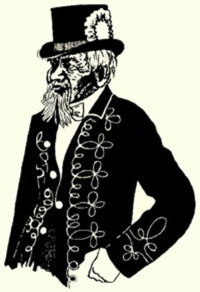 Old Tecopah — I say old because he was old — just wrinkles and squint, was Chief of the Paiutes living in Eastern California North of the Santa Fe Ry., and made his home in Mamvel (Barnwell, California).
Old Tecopah — I say old because he was old — just wrinkles and squint, was Chief of the Paiutes living in Eastern California North of the Santa Fe Ry., and made his home in Mamvel (Barnwell, California).
We had 3 trains per week on the Ivanpah Branch—which ran from Goff to Ivanpah.
Tecopah was always on hand to meet the trains and had his own little story to tell—something like this—"Me Chief Tecopah—Paiute Indian—my people always friendly to white man—many time fight Shoshone Indian to help white man. (Cough Cough Cough) Me 106 years old—Pretty Soon die—maybe so you got 'Four-bits'?"
Tecopah always wore a full dress suit—a gift of a Los Angeles Banker, this outfit with his Tall Stovepipe Hat and Rosette, making him a striking figure.
I saw him off on the train in 1903 and was very surprised a week later to see him get off the train with the same old suit—his story of what happened follows:
For many years the Banker used to meet Tecopah in Los Angeles — take him to a Turkish Bath — the barber, shoemaker, gents outfitting shop, hat shop, and, once he was all slicked up, get out his 4-in-hand—take his two beautiful daughters and show off the old Chief to the citizens of the city. On this (his last trip to L. A.) he found the banker had gone to Europe. He called at the Bank and the teller said "Hello Tecopah—how?" (Cough Cough Cough) me fine—got Tuberculosis—where Mr. Ditmann" The Boss is in Europe. "Europe—me no sabe him where bouts?" "About 30 moons East—coming back next Fall"
"Huh—what bout new outfit—suppose you buy?"
"No, I have had no orders to outfit you Tecopah—sorry." Feeling sorry for the old Chief, the teller took $2.50 and slid it across the desk.
"Ugh—heap big 'money store; $2.50—you keep-um." The old man hung about and the teller finally asked the police to come and take care of the Chief for the night. Telling about this Tecopah said.
"Big man—fine blue suit come take me fine big hotel—strong hotel—iron on windows—doors—no body get in—give me fine hot bath—fine room sleep in—plenty fine grub bacon and eggs—potatoes—bread—plenty coffee — 3 times every day—fine big hotel. Put Tecopah on train—no suit—long time Mr. Ditmann no come Los Angeles—Me Old Man—106 Years Old (Cough Cough Cough) Dr. Murphy say Tuberculosis—pretty soon die—Maybe so you got Four-Bits?"
—Thanks to Capt. R. A. Gibson, Palm Springs
COULD THIS TALL TALE BE TRUE?
If your Guide didn't have an old timer tell you this old yarn on your visit to The Redwoods—you were cheated.
"Big trees? Why we got 'em—They felled a hollow tree over a ravine that was too deep and would cost too much to build a bridge across. One day when I was comin' through this tree-bridge with a load of hay I met another man with a load of hay coming through the other end. I couldn't go back or go ahead—so I just back into a hollow branch and let the fellow go past me."
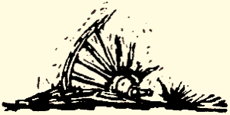 THE INDIAN GHOST OF THOUSAND PALMS
THE INDIAN GHOST OF THOUSAND PALMS
The ghost of Chief Pushawalla watches Paul Wilhelm of Thousand Palms Oasis. The Chief traded this oasis to paul's dad (the Lucky Dutchman) about 50 years ago for a buckboard and two mules. The crazed mules died later, with the Chief, because he couldn't get them out of the wash. This was during the cloudburst of 1899.
Yes, the Chief watches Paul as he digs into the old Indian graves and watches him as he plants palm seeds and tiny palms between the giant palms of 200 years. He laughs at the little plants for Paul is trying to gild the lily. Can't do much to what is already the prettiest darn Oasis on this desert.
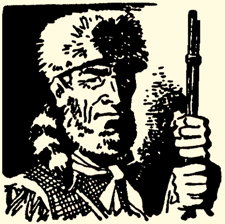 SPRING IN HIS BRITCHES
SPRING IN HIS BRITCHES
Thanks to Dr. Waldo Jones, Myrtle Beach, S. C.
An old friend of mine now long gone to Glory told me this story and I'll pass it along to you. No claims filed on it. It's all yourn.
The two tenderfoot prospectors were busily eating supper after dark and had a fine roaring fire.
Those delicious beans plunked noisily into their tin plates and the fat back sizzled in the pan along with some jerkey to season the jerkey.
Suddenly a figure showed up on the other side of the fire. A short squatty man stood there. Grizzled of face and unwashed of body. "Hody friend," sezze.
Well with true Western Hospitality they invited him to eat which he did with alacrity. He used a great big Bowie Knife for the job and stood on the opposite side of the fire. Every time he moved on one side the tenderfoots moved on the other. This continued for and hour or so finnaly the tenderfeet could stand it no longer.
"Pardner we ain't done nuthin to you and ifn you're going to jump us—well damn ye—get to it.
For a few minutes complete silence and then the stranger let out a loud bray of laughter. Boys I ain't going to jump ye. It's thisaway. I got on buckskin clothes and back a ways I got all wet and hed to dry the britches on my hide to keep them in shape and the knees got a bulge permanent like. I got awful short legs and it jest looks like I'm going to jump all the time but I ain't.
Finally they were persuaded he was telling the truth and peace settled on the valley again. Nothin left to worry about but Indians and Grizzlys.
Told me by Lt. Joseph O. Reed, Territorial Guard, U.S.A.
Later Lt. Reed became Joseph O. Reed, M.D. and lived long across the street from Retired General Nelson Miles.
LOOKING AHEAD WITH AN
ARCHEOLOGIST
By E. and G. BAKKER
Jimmy Brewer lately of Navajo National Monument foresees in the dim future Icelandic archeological expeditions to the runed cities of America. He predicts that they will be bewildered by the finding of small white porcelain objects, four in the desert, and six and eight in the corroded foundations of ancient cities. They will alway be found in a row and will be assigned some unknown ceremonial value. In other words, brother, the porcelain of our sparkplugs will outlast our civilization.
Let's not be too quick to blame the human race for everything. A great many species of animals became extinct before man ever appeared on earth.
—Will Cuppy
![]()
Q. and A. Dept
Q—Was Jim Thorpe, famous world athlete all indian?
—The Champion's Indian blood adds up as follows:
1/2 Sauk and Fox
1/8 Cherokee
1/8 Potowatomie
1/8 Osage
1/16 Choctaw
1/16 Irish
• • •
HEAP MUCH GOOD INDIAN STUFF
SHOSHONE MINNIES FIRST AID KIT
A Report to the Medical Profession
By HARRY OLIVER
This story has never been printed before and wouldn't be now only for all this Blood Bank, First Aid talk and Atomic doin's. We folks out here in the desert have learned some out of that Red Cross First Aid Book, and my thinkin' that maybe there's an idea in this yarn that might help the medical profession is why I'm tellin' it now.
For years, on Christmas day, Minnie had been comin' here to the Shoshone store and Post Office and always she gets a big box that's come all the way from back east in Boston, Mass. It says on the box from Dick Van Osten, Back Bay, Boston, Mass., for Shoshone Minnie, Shoshone, Death Valley Jct., California.
Minnie is fat and old today, she gave birth to eleven Indian babies in her years of bloom. When I first saw her back in 1918 she was volupchus (that stuff they call oomph now).
But here is the story Back in August of 1918 a party of 3 (two sellers, one buyer), stopped her on their way into Death Valley to look at a piece of mining property, filled up their canteens and took a 5 gallon can of water for their car. They told the storekeeper that they knew where they was a goin' and would be back next day.
Well, they didn't come back and the evenin' of the followin' day Toad Watson (deputy sheriff) gets in his Model T with Mac the clerk of the store and starts trailin' their car. It's next mornin' when they come onto the party, crazed with the heat, lips swollen, stumblin' down a dry-wash, eys burnt and glassy.
Toad gave them each a bit of rag, jest moist (not wet), loaded two in the back seat with Mac between them to keep them from bouncing out, he watching the young feller from Boston aside him. Then he hit for the road, aimin' to get to Shoshone via Jubilee Pass in a coupl'a hours.
With help, the there victims were laid out in the shade of the open barn as scalding hot coffee was given them—a tea spoon full at a dose.
Indians stood around in the outer shed to watch. Toad Watson gave orders and the three man lay on their beds of bailed-hay, mumbling and moaning for water.
Young Dick Van Osten swallowed his spoonfull of hot coffee begging for more, then his glassy eyes turned to the Indians close by, Minnie was trying to coax her over-fat baby to nurse from her generous, moist breasts—young Dick Van Osten's Boston bringing up vanished—crazed with a burning, flickering, head of hellfire—he bolted for Minnie.
Toad Watson was for dragging him away—but Old Indian John getting up from his seat on a bale of hay, said MUCH GOOD—GOOD FOR 'EM — UNBURN-EM EYES — NO STOP 'EM.
Dick Van Osten's eyes did clear up days before the other fellows. So, I thought the medical profession should know all this. The secret is 34 years old.
•
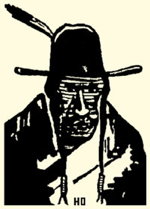
SO THAT'S WHERE THEY GO AFTER GRADUATION
Tourist (in Yellowstone Park):
Those Indians have a blood-curdling yell."
Guide: "Yes, ma'am; everyone of 'em was a college cheer leader."
A review, a page from
WESTWARD THE WOMEN
By Nancy Wilson Ross
Published by Alfred A. Knopf, N. Y.
Another famous Idaho character whose respectable married name is est left unmentioned is said to have been a sister of Calamity Jane. This statement is sworn to by the ballad-singing, half-blind hermit who lives near the Golden Anchor mine along with his memories which include such garish items as a harem of seven Sioux squaws. This old man bases his ascertion on his remembrance of the night he saw Calamity Jane's brother going down to a dance hall—whether in Deadwood Gulch, Blackfoot, or Virginia City he did not say—to shoot his younger sister because she was "turnin' out bad." Apparently the younger sister decided to leave home hastily, for she survived, and she did not reform. The records say that Calamity Jane — who could outlie, outshoot, outswear, and outdrink any ten men of her era, and who boasted of campaigning against the Arizona Apaches, scouting for Sioux on the Rosebud, and swimming the Platte River with dispatches for Custer, thus avoiding the massacre of the Little Big Horn—did have a sister. She had, as a matter of record, two, but data on them is scarce, ranging from virtuous deaths from tuberculosis brought on by leaning over steaming laundry tubs, to apprenticeship to Mother Mustache, the queen of the underworld gamblers of six states. The latter activity seems a more likely career for a sister of the Far West's most untrammeled female. This sister, if such she was, had another name before her Idaho one. It was, says the hermit of the Golden Anchor, Lousy Liz.
![]()
A big buck Indian had juste ordered a ham sandwich at a drugstore and was peering between the slices of bread when he turned and said to the waiter: "Ugh, you slice 'em ham?" The waiter replied: "Yes, I sliced the ham."
"Ugh," grunted the Indian. "You darn near miss 'em."
"You can't slice anything so thin it has only one side."
![]()
THE SCALPING OF BUFFALO BILL
By E. E. EDGAR
William F. Cody (Buffalo Bill), after matching his wits with the Indians for more than a decade without mishap, finally deserted the open spaces and went into show business with his own Wold West show.
One morning in Boston, he entered the hotel barbershop to have his long hair trimmed. He had been to a party the night before and was suffering from a hangover.
As the barber placed the sheet about him, Cody fell into a sound sleep. The barbar, assuming that the former scout wanted a close trim, applied the scissors with vigor. Some minutes later, Cody awoke. Still somewhat dazed, he looked down at the floor and saw his hair piled up at the side of the chair. With an anguished howl, he clapped his hand to his head and cried:
"My God! Scalped at last."
Indian Sign No. 1—When you see a squaw carrying her papoose on her back and it's wrong side up—it's a sign "she's in a hurry."
Indian Sign No 2—When you see an Indian Chief trying to start a fire with two dry sticks—it's a sign his granson is a boy scout.
Indian Sign No. 3—When you see an Indian with a sign on him reading "Wet Paint"—it's a sign hes a cigar store Indian.
Indian Sign No. 4—When you see a baldheaded Indian—its a sign he's not an Indian.
Indian Sign No. 5—When you see an Indian walking pidgeon toed—it's a sign he will never have fallen arches.
![]()
Chief say, "TELEVISION HEAP CRAZY MEDICINE.
VISIT FAMOUS
Scotty's
Castle
Finest Accommodations
EXCELLENT MEALS
Gasoline and Oil
Open the Year 'Round
Showplace of
DEATH VALLEY
49er Gold Rush
Reprinted from "The Union," Grass Valley, California
MYSTERY CHIEF SHOWED THE GOOD SIDE OF INDIANS
The curious story about the mysterious Indian sub-chief Wad-Lu-Pe, mentioned in last week's column, shows up a trait in Indian character that mostly is obscured by the generally too highly flavored stories about cruelty and treachery.
Wad-Lu-Pe was not only a physical giant, standing 6 feet, 5 inches, he was also a monumental character of outstanding leadership qualities. His mysterious disappearance from the scene in the opening years of Grass Valley's history adds to the story an ending that is as intriguing as the shrouded story of his earliest years.
The big chief Wymmer, head of the Digger Indian tribe in this vicinity, never explained his favored sub-chief's appearance. All he had to say on the subject was:
"Ough! Wad-Lu-Pe, him great big Chief, son of great spirit Maviton Him come from sunrise after one night of big storm and rain. Him be chief when Wymmer gone.
Appeared in 1853
Wad-Lu-Pe made his first public appearance as a leader in Grass Valley in the fall of 1853. It was a season of famine among the poor Diggers. The crops of pinenuts, manzanita berries and grasshoppers had been total failures, and the Digger's means of subsistence had been reduced to the point of actual starvation. Wad-Lu-Pe at the head of a party of about 100 Diggers—men, women and children, marched into Grass Valley and halted in front of the general merchandise store of Henry O. Waite, where Wad-Le-Pe in perfect English, asked for the proprietor. One of the clerks pointed out Mr. Waite, who at that moment was engaged in conversation, in the French language, with a customer. Wad-Lu-Pe, chancing to hear Mr. Wait speaking Franch, after politely waiting until the latter was at leisure, addressed him in French.
"Monsieur Merchant" he said, "I have come with some of my adopted people to secure food on my word of honor without money. At present we have no gold, but when the rains of spring shall have washed the hillsides and the ravines of which my people know we will have gold in abundance with which to pay. Our women, our mothers, our sisters, and our daughters are starving. Our papooses cry and whimper in vain. Will the white merchant, who has an abundance in store, help the poor Indians to live through the winter?"
Business Plea
This speech was made, not as a shining plea for charity, but as a business proposition, based upon the honor and integrity of this colpper hued prince, one one side, and the white merchant's confidence on the other.
'You shall have what you need," was Mr. Waite's reply, made unhestitatingly, notwithstanding the fact that he would receive not a shadow of security. "But just now the roads to your village are impassable on account of the melting of the first snow. I will give you what you and your men can carry, and in a few days when the ground has settled I will send my teams with supplies.
At this the Indian made a stately bow then he went to the door and called in ten of the strongest bucks in his following. On the back of each of these sturdy sons of the forest was placed a hundred-pound sack of flour, ten sacks in all, together with some other articles necessary to the diet of a Digger. Then, after Wad-Lu-Pe, who carried no burden, had shaken hands with Mr. Waite and thanked him for his kindness, the entire party quietly departed for their own village, eight miles distant. A few days later Mr. Waite sent three wagonloads of supplies to the two Digger villages, Buena Vita and Penn Valley.
Return in Spring
On a bright, sunny and balmy day in the following spring, Wad-Lu-Pe, followed by fully 300 Diggers, men, wonen and children, marched into Grass Valley and formed themselves into a semi-circle in front of Mr. Waite's store. Wad-Lu-Pe and about forty bucks entered the store, one at a time, each in turn as he was called by the mysterious leader. Each buck carried in his hand a bag of gold dust, weighing in value from $100 to $150 which was deposited on the counter before Mr. Waite, Wad-Lu-Pe, the while standing nearby, his arms folded across his expansive chest, like a feudal prince supervising the payment to an imperial master.
"Thus shall faith be kept and each many of my people shall pay his debt of honor," spoke Wad-Lu-Pe.
Another Chief
Another remarkable Indian chief is recalled by the 100th anniversary of the discovery of Yosemite Valley, which will be celebrated the 25th of this month.
It was on that date in 1851 that a segment of the Mariposa Battalion, led by Major James D. Savage, pushed through snow and mud to the edge of the valley which had been the secret hiding place of the troublesome chief Tenaya and his Yosemite tribe.
Savage's soldiers themselves gave the valley its name. After discarding "Paradise Valley" they agreed to name the valley after the tribe that inhabited it, and the name stuck.
But Savage's name did not stick. The name of John Muir, the great naturalist, is the one most closely associated with the valley because of his explorations of the area over many years which culminated in the setting aside Yosemite National Park in 1890.
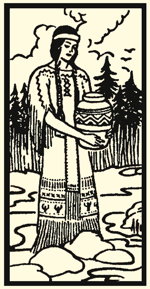
White-Sands Moon Light and Indian Blanket
One day a government inspector was checking progress on the vast federal installations at Los Alamos, New Mexico, when he saw a very pretty Indian woman pass by. Several white surveyors saw her, too, and were much interested.
About a year later the inspector was back there working, and the same pretty Indian lady passed again, but this time she was carrying a papoose. He spoke to her and began admiring her baby. "Well well," the inspector beamed. "Him little Injun, eh?"
Said the Mother, "Him part Injun, part injuneer."
![]()
PHAT GRAETTINGER
Editor Desert Sun
Swank Palm Springs Paper Says
The trouble with this country is that the Indian didn't have strict enough immigration laws.
NO RESERVATION
A navajo Indian was being inducted into the Army.
"Do you speak any foreign languages?" he was asked.
"Yes," he replied, "English."
![]()
Stop At Chiriaco Summit and verify this story
The wind some-times blows, at Chiriaco Summit on Highways 60 & 70, and some-times it blows most of the time.
A near-sighted man lost his hat in a strong wind. He gave chase. — Mrs. Chiriaco screamed from a back window:
"What are you doing there?"
"Getting my hat," he replied.
"Your hat," exclaimed Mrs. Chiriaco.
"That's ours little black hen you're chasing.
HISTORICAL
CALICO GHOST TOWN
Yermo, California
13 Miles East of Barstow
Calico in the 1880's was the largest silver mining Camp in the southwest. Almost obliterated by time, it is now being restored by Knott's Berry Farm. An ideal outing for the rockhound, and camping groups.
OPEN DAILY
THIS IS PAGE FIVE
MEANWHILE BACK AT THE FORT
Alert Western newspapers are constantly spying about here at Old Fort Oliver—Wide-awake reporters watch me like so many hawks—It all dates back to my Secessionist campaigns, that are always simmering.
But this nimble reporter Gerry Adix—of the Riverside Enterprise got his story of this unguided missile before I knew it was a story.
OLIVER TELLS DOG'S PLIGHT
By GERRY ADIX
Thousand Palms, Oct. 1. Harry Oliver, champion tall tale teller, fact confuser and legend hunter, said today he had a doggone problem that was downright "earie"
He claims Whiskers, a 17-year-old dog at Old Fort Oliver is barking on the outside at strange noises he's hearing on the inside.
It was that peanut hearing aid that caused all the trouble. Oliver says caused all the trouble, Oliver says Whiskers mistook it for something to eat and swallowed it.
It all started out, the Desert Rat Scrap Book editor, said when he noticed that Whiskers wouldn't answer when he talked to him.
"At first I thought he was mad when he wouldn't talk to me any more," said Harry. "But then I noticed he wouldn't come when I called him to dinner either.
Turned out that Whiskers had gone stone deaf, Oliver said, so he got him one of those newfangled hearing aids—the kind you can even wear in the shower and no one will know.
Of course, harry said, Whiskers doesn't get in the shower often but once in a while he does get caught out in the rain so he thought the thing would be real nice.
The Fort Oliver general said he put it in Whiskers ear, leaned down and said, "Whiskers, this is a peanut hearing aid." And the dog heard. But he got so excited that he stopped listening after the word peanut, flicked it onto the ground and ate it before Harry could stop him.
Well Whiskers can still hear, Harry says—if you get down and talk to him real close in the vicinity of his stomach.
"But there's one problem," said Harry, "with all that grumbling and rumbling noises that darn thing picks up, Whiskers is always running for the house. He thinks it's thunder and probably going to rain.
Old Fort Oliver a historical showplace on "Old 90" Highway.
The road that went to all desert places years ago, but today goes nowhere.
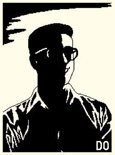
All text was hand-entered (no OCR scans) by Dick Oakes who did the layout, markup and graphics reproduction (all of Harry's misspellings retained). The contents remain the property of Bill Lincoln and his heirs.
